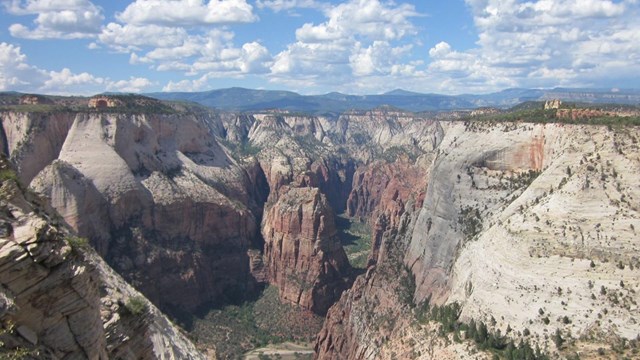
It is hereby declared to be the policy of the United States that certain selected rivers of the Nation which, with their immediate environments, possess outstandingly remarkable scenic, recreational, geologic, fish and wildlife, historic, cultural or other similar values, shall be preserved in free-flowing condition, and that they and their immediate environments shall be protected for the benefit and enjoyment of present and future generations. - Wild & Scenic Rivers Act, October 2, 1968 Wild Rivers in a Wild Country On March 30, 2009, the upper section of the Virgin River and its tributaries was designated as Wild and Scenic Rivers. But what makes rivers “wild and scenic”? The answer can be found in Zion National Park. The Wild and Scenic Rivers Act was approved by Congress in October, 1968. Its purpose: to maintain the integrity of rivers and tributaries, and their surrounding environments. A wild river is free from impoundments (dams and channeling) and is inaccessible except by foot trails. It epitomizes remnants of “primitive America.” Scenic rivers are mostly primitive with some roads leading to them. Less than 1/4 of 1% of our nation’s rivers are protected under the National Wild & Scenic Rivers System. Slipping through Zion’s wilderness are over 153 miles of wild and scenic waterways. Utah has 81,899 miles of river, but Zion is one of the only places in the state that has a Wild and Scenic River. Where can you find the “wild and scenic ones”? A partial list includes the northwestern Kolob Canyons section of the park, where you can walk along Taylor Creek, LaVerkin Creek, and Timber Creek. Off the Kolob Terrace Road, a Wilderness permit allows you to parallel the Left Fork of North Creek. When entering the permitted “top down” section of the Narrows, you’ll trek through a sandstone canyon in the North Fork of the Virgin River. For the more skilled adventurers, rappelling into technical slot canyons with a permit provides a unique way of experiencing some of the most remote wild and scenic rivers in the region. You can help keep these special rivers and streams clean by staying at least 100 feet from the water before using soaps or urinating. In some narrow canyons, it is not possible to get more than 100 feet from water. If that is the case, urinating directly into the water is the best course of action. Always use a human waste disposal bag to carry out solid human waste. In order to protect the natural resource, burying solid human waste is not allowed anywhere in Zion National Park. View a map of Wild and Scenic Rivers in Zion. 
Zion Wilderness
83% of Zion is designated as Wilderness. 
Nature
Located in southwestern Utah, Zion National Park encompasses some of the most scenic canyon country in the United States. 
Wilderness Information
Planning and permits for backpacking, canyoneering, and other Wilderness trips. |
Last updated: August 31, 2024
